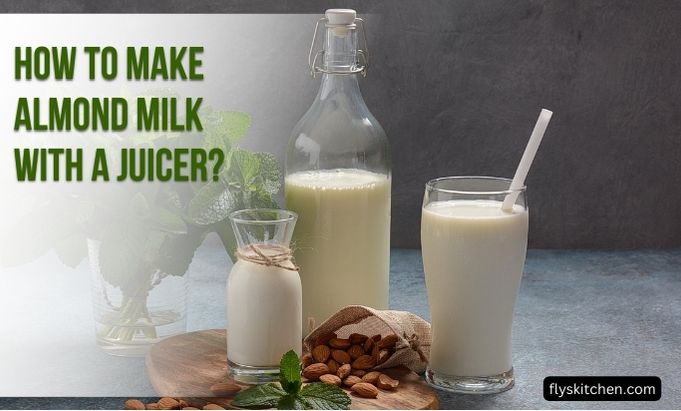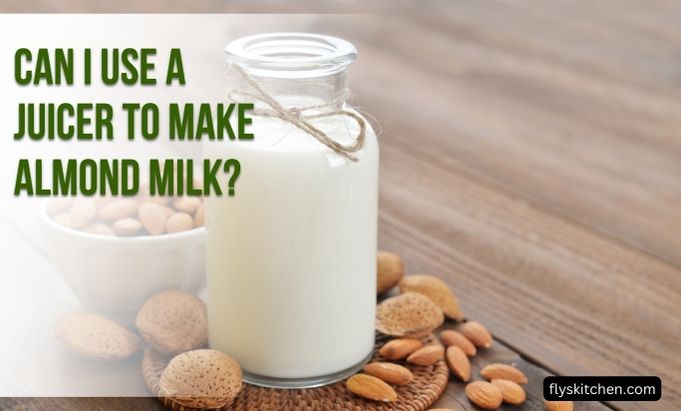Many health-conscious consumers already own juicers for making fresh fruit and vegetable juices at home. So a common question that arises is: can you use a juicer to make homemade almond milk? In this comprehensive guide, we’ll explore the pros and cons of using different types of juicers versus regular blenders. You’ll learn whether juicers can effectively produce almond milk, discover the potential benefits and downsides, and get actionable tips for attempting almond milk in your juicer at home. Let’s dive in and settle the debate over juicers vs. blenders for making nut milk.
Contents
Introduction
Almond milk has exploded in popularity in recent years as more people seek out dairy-free options. Commercial almond milk provides an easy, grab-and-go option. However some consumers want to avoid additives and preservatives found in store-bought varieties.
Making your own almond milk at home gives you full control over the ingredients. You can create a pure, additive-free almond milk tailored to your own tastes and needs. And with the right tools, it’s surprisingly easy to make almond milk yourself.
Many people already own juicers for making fresh fruit and vegetable juices. So a common question is – can you use a juicer to make homemade almond milk? Let’s take a deeper look at the pros and cons of using juicers versus blenders to find out.
Can All Juicers Make Almond Milk?
Juicers come in a few different types, including centrifugal, masticating, triturating, and citrus juicers. The key difference lies in how they extract juice and process ingredients.
Unfortunately, not all juicers can effectively make almond milk. Centrifugal juicers spin produce at high speeds to separate the juice from the pulp. But this process doesn’t work as well for nuts and seeds. Centrifugal juicers also create heat that can destroy nutrients in almond milk.
Masticating and triturating juicers are better suited for plant-based milks. They crush and “chew” ingredients to extract more juice and operate at slower speeds. This preserves nutrients better than centrifugal models. But they still may not fully pulverize almonds into a smooth milk consistency.
Citrus juicers are manual presses targeted at citrus fruits, so they would not work for almond milk at all.
Why Use a Juicer Over a Blender?
Blenders are generally considered the best appliance for making nut and seed milk like almond milk. Why might someone choose to use a juicer instead? There are a few potential advantages.
Higher yields: Masticating juicers are very efficient at extracting liquid from produce. The pressure and “chewing” action may yield more almond milk from a cup of almonds compared to a blender.
Less oxidation: Juicers minimize exposure to air while processing ingredients. This reduces oxidation which degrades nutrients in almond milk.
Fine filtration: Some juicers have fine screens that further separate pulp from almond milk. This yields a smoother, pulp-free final product.
Easier cleaning: Juicers have less surface area and components to clean than blenders. The almond pulp can stick to blender jars, making cleaning tougher.
So for some people, a high-quality masticating juicer may provide benefits over a blender when making almond milk. But blenders still tend to produce the most consistent results.

How to Make Almond Milk With a Juicer?
If you want to try making almond milk with your juicer, follow these steps:
Ingredients
- 1 cup raw almonds
- 2-4 cups filtered water
- Pinch of sea salt (optional)
- Dates, honey, or maple syrup to taste (optional)
Directions
- Soak almonds 8-12 hours or overnight. Drain and rinse.
- Add soaked almonds to juicer chute. Alternate almonds with water.
- Run juicer on low speed setting. The almond pulp will eject into one container, while almond milk flows into another.
- Strain almond milk through a nut milk bag or fine mesh strainer to catch any remaining pulp.
- Add desired sweeteners if wanted, then stir in pinch of salt.
- Transfer almond milk to an airtight container. Store in fridge up to 5 days.
This straightforward process lets you make fresh almond milk at home with your juicer. But the consistency may be thinner than blender-made almond milk. Some pulverized almond sediment may also pass through the juicer screen.
Tips for the Best Results
Follow these tips if you want to try making almond milk with a juicer:
- Choose a masticating or triturating juicer. Centrifugal models don’t work as well.
- Soak the almonds 8-12 hours before juicing. This softens them for easier breakdown.
- Alternate adding soaked almonds and water down the juicer chute. Don’t overload it.
- Strain the milk through a nut milk bag to catch any sediments.
- Add more water for a thinner consistency or less for thicker milk.
- Sweeten to taste with honey, maple syrup, dates, or other natural sweeteners.
- Shake or stir the milk before drinking to incorporate any separation.
- Store leftover milk in the fridge and shake before using.
While blenders make smoother almond milk, a masticating juicer can provide decent results. Follow the tips above to get the most out of juicing almonds.
Pros and Cons of Juicers vs. Blenders for Almond Milk
To recap, here’s an at-a-glance look at the key upsides and downsides of using a juicer or blender to make almond milk:
Juicer Pros
- May yield more milk per almond
- Less oxidation
- Can filter finer pulp
- Easier to clean
Juicer Cons
- Milk consistency may be thin or pulpy
- Must use masticating/triturating model
- Smaller batches than blender
- More straining required
Blender Pros
- Creamiest, smoothest milk
- Larger batch capabilities
- Thicker, more consistent texture
- Pulverizes almonds into finer milk
Blender Cons
- Some nutrient degradation from heat
- More challenging to clean fully
- Milk oxidizes faster
As you can see, blenders produce the overall best almond milk, while juicers offer some benefits but also downsides. For most people, blenders remain the top choice. But juicers provide an alternative for those who already own one.
Frequently Asked Questions
Can you use any juicer to make almond milk?
No, centrifugal juicers don’t effectively make almond milk. You need a masticating or triturating juicer.
Is juicer-made almond milk smooth?
It may contain more pulverized almond sediment than blender milk and have a thinner consistency. Straining well helps remove pulp.
How long does homemade almond milk last?
About 3-5 days when sealed and refrigerated. Shake before using as separation occurs.
Do you need to soak almonds first?
Yes, soaking softens almonds so they break down easier in the juicer.
What’s the best juicer for almond milk?
Masticating models like those from Omega provide the best results for almond milk in a juicer.
Conclusion
While blenders make smoother nut milk, you can make almond milk in a masticating juicer. The process is simple – just soak almonds, alternate adding them water down the juicer chute, and strain out the pulp. Juicer-made almond milk may be thinner and contain more sediment than blender versions, but still provides a quick homemade option. If you want to use your existing juicer to make additive-free almond milk at home, give this method a try. Just be sure to use a masticating or triturating model for the most success.
Meta description: Learn whether you can use a juicer to make homemade almond milk. We cover the pros and cons of juicers vs blenders for making nut milk.

